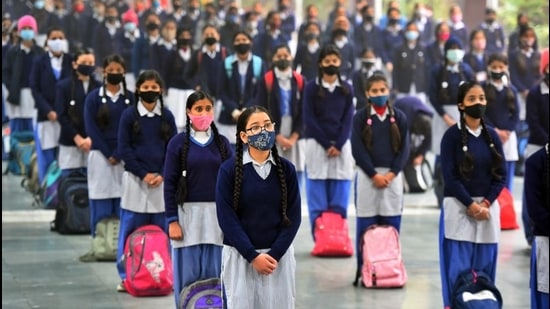Provide data on the education of Muslims
Monitoring the educational progress of Muslims was hamstrung by the absence of official data, leading to their downward spiral that went unnoticed for decades
Educational reform is critical to promoting and sustaining the development of communities. This is particularly true for Indian Muslims, who are, today, India’s most educationally disadvantaged community. However, this change cannot even be articulated without addressing the limitations in the official education data sets available on Indian Muslims.

Without empirical evidence, educational planning will depend on subjective and impressionistic views. This was highlighted by the 2006 Sachar Committee Report on Muslims, which observed that it was often believed, without data, that most Muslim children studied in madrasas, thus encouraging religious fundamentalism. The evidence indicated that far fewer Muslim children attended madrasas than believed — around 4% of those aged seven-19 — and that most Muslim students attended government and government-aided schools.
A major contribution of the report was to highlight the paucity of data on Indian Muslims in general and their education in particular. Consequently, more official educational data was released, but glaring omissions and deficiencies persist in many government sources of information.
This includes the most recent compilation of the department of education, Educational Statistics at a Glance, 2018, which has continued with the post-Independence tradition of providing data for the general population, and separately for Scheduled Castes (SC) and Scheduled Tribes (ST), but excluding Muslims as a separate category. Muslims have also been excluded, and SCs and STs included, in the student enrolment data furnished by special government school networks run by the Kendriya Vidyalaya Sangathan (KVS) and the Navodaya Vidyalaya Samiti (NVS).
Muslims are also conspicuous by their absence in the National Achievement Surveys (NAS) of the National Council of Educational Research and Training (NCERT). The most recent 2017 NAS evaluated the learning outcomes of about 2.2 million students in language, mathematics and environmental studies in classes 3 and 5, and tested social studies, science and environmental studies in Class 7. Like the previous publications, learning data was provided separately for SC and ST students. While now including Other Backward Classes (OBCs) too, the NAS Report excluded Muslims from its purview.
The importance of this type of learning data, enrolment and other statistics is highlighted by comparing the post-Independence educational trajectories of Muslims, SCs and STs. Educational statistics in colonial India indicated that Muslims were far ahead of SCs and STs in educational enrolment at all levels of school and higher education.
However, unlike Muslims, SCs and STs made educational progress in post-Independence India. The availability of data on SCs and STs allowed for special educational schemes to be launched for them. National and state planners and government agencies used a variety of educational indicators to track their quantitative and qualitative progress, thus enabling corrective action.
On the other hand, monitoring the educational progress of Muslims was hamstrung by the near-total absence of official data, and consequently, their inexorable downward spiral went publicly unnoticed for decades. When official education statistics and the 2001 Census data on Muslims was finally made publicly available, the true extent of their “invisible” comparative decline was revealed.
Muslims have been the most educationally backward group in India. In comparison to their population, they have the lowest enrolment rates at elementary, high school and higher secondary school education, as well as higher education.
Since the official educational statistics have revealed for almost a decade that Muslims are the most educationally backward, it is unreasonable for the department of education’s Educational Statistics at a Glance, KVS, NVS and NCERT to continue to exclude Muslims from their purview. Though recent school and higher education reports — District Information System for Education and All India Survey on Higher Education — do provide data on Muslims, it is not comprehensive.
What should the government do to remedy this? First, review all official publications including the Census, and publish data on Muslims that is made available for SCs and STs. This includes statistics on enrolment, learning, examination results, provision of facilities/ scholarships in all central and state reports, which would assist in tracking the educational progress of Muslim students, at all stages and networks of school and higher education. Institutions such as Unicef, Unesco and the World Bank should also be urged to follow suit in the reporting of data.
Data on Muslims and all other religious minorities should be reported separately. This will help avoid any ambiguity since it is unclear whether the use of the term “minority or minorities” refers to Muslims only or all religious minorities.
Indian Muslims are now close to 200 million and comprise almost 15% of the population. Any sustained educational reform that can pull them out of the economic, social and political morass they find themselves in, can only be implemented on a strong foundation of comprehensive data on Indian Muslims that can help track their educational progress.
John Kurrien has been working in the field of the education of disadvantaged groups for four decades
The views expressed are personal



